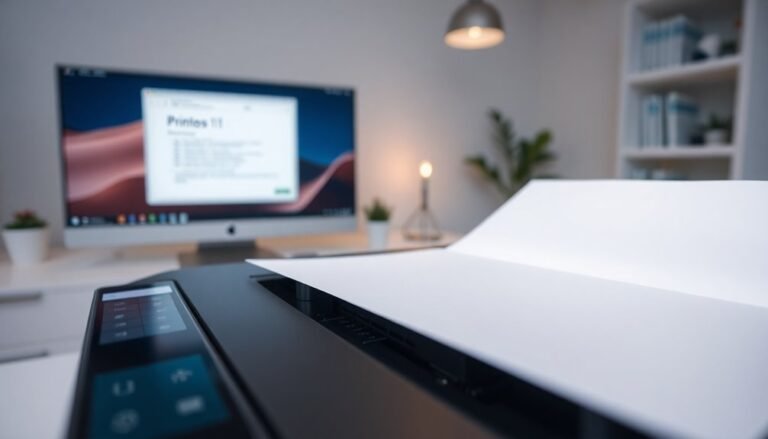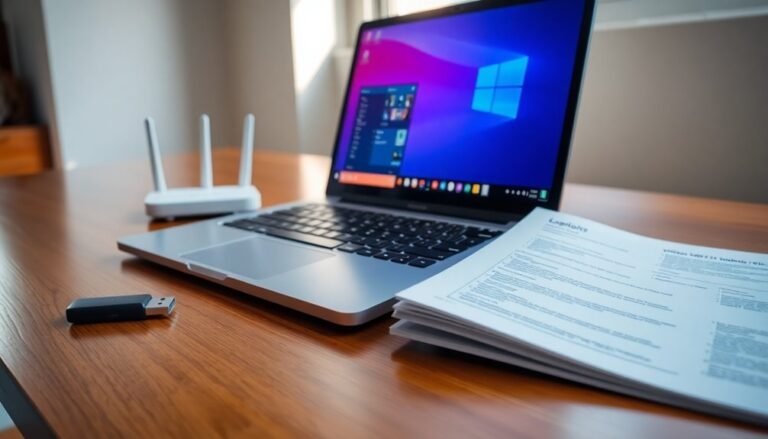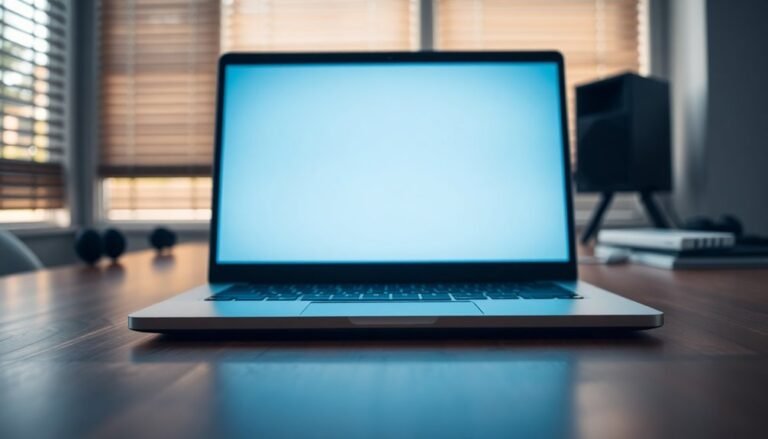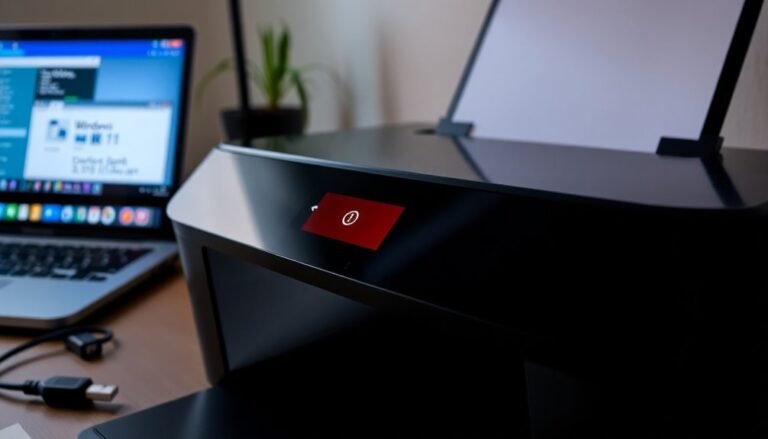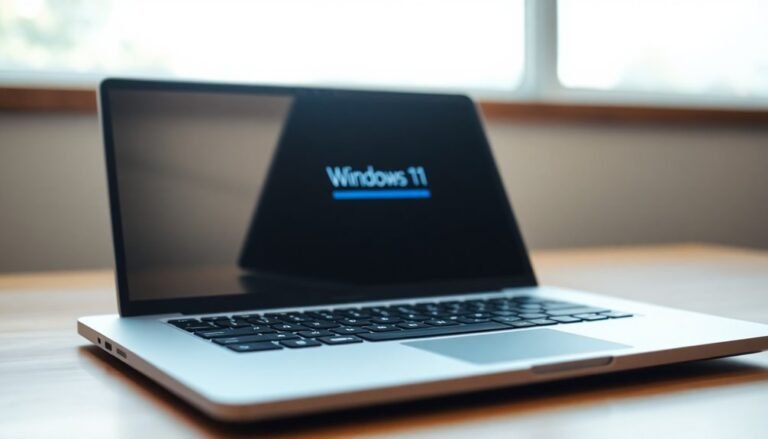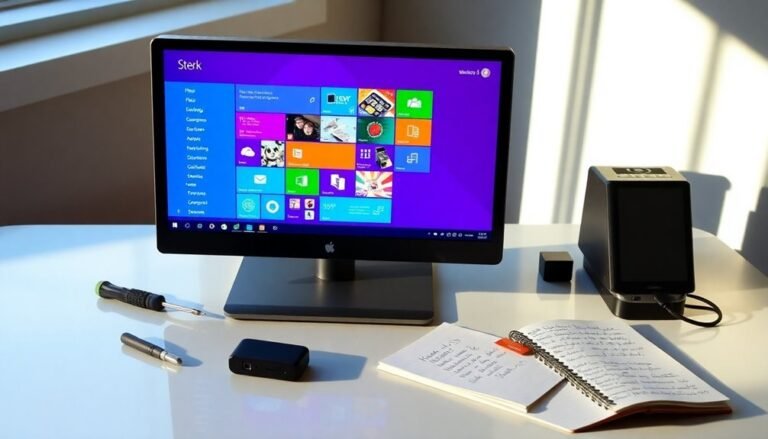Fix USB-C Problems Windows: Comprehensive USB-C Troubleshooting
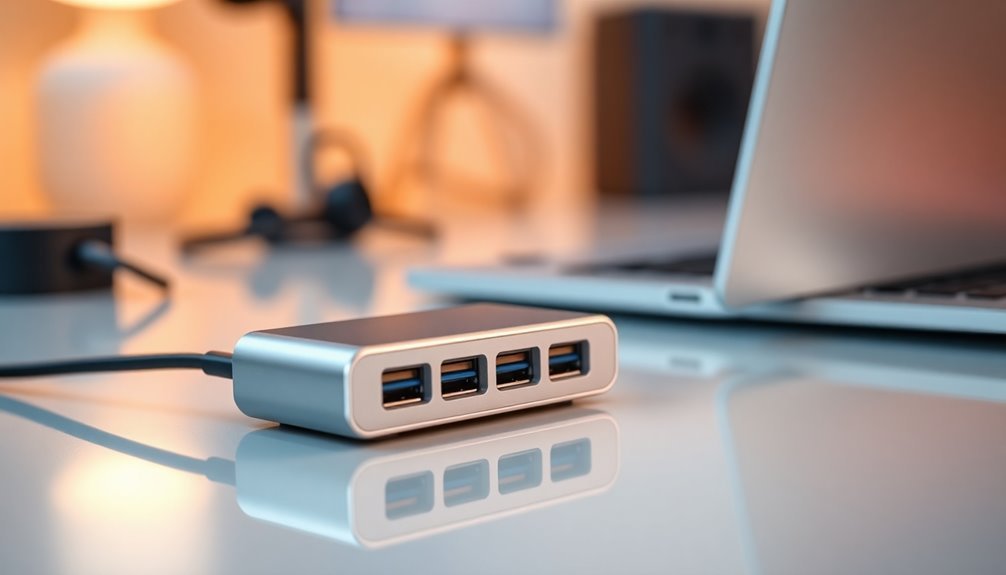
To fix USB-C problems on Windows, start by inspecting and cleaning the port for debris and corrosion. Managing your drivers through Device Manager can help; try uninstalling and reinstalling USB controllers.
Next, adjust your power management settings to disable USB selective suspend. Ensure your cables are high-quality and certified to avoid connectivity issues.
After making these changes, restart your device to refresh hardware states. If problems persist, consider exploring more advanced troubleshooting techniques to ensure your USB-C functions smoothly.
There’s much more to discover when it comes to optimizing your USB-C connections.
USB-C Port Physical Inspection and Cleaning
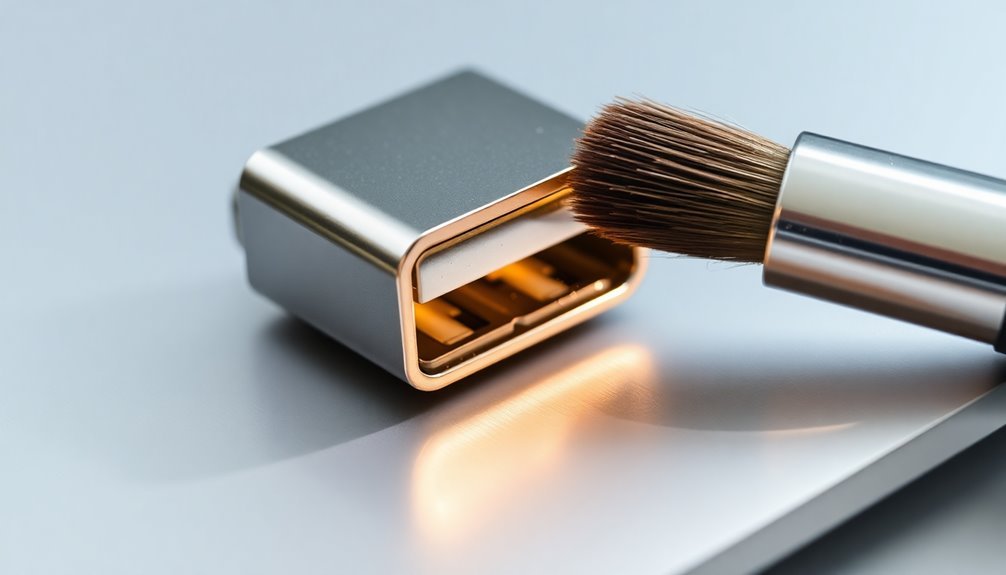
Inspecting and cleaning your USB-C port is crucial for maintaining its functionality and performance. Begin by visually examining the port for any debris such as lint or dust that might obstruct connections. Utilize a flashlight to take a closer look at the interior, checking for signs of corrosion or bent pins that could impair performance. When inserting a cable, pay attention to any resistance or looseness; this could indicate the presence of internal debris or potential damage.
For effective and safe cleaning, use canned compressed air, ensuring you hold it upright to prevent moisture accumulation. Blow short bursts into the port and monitor for improvements after each attempt. If debris remains, carefully use a dry brush or a wooden toothpick to dislodge stubborn particles, taking care not to cause damage. Regular cleaning helps maintain a stable and efficient charging process, which contributes to device longevity.
Should any grime persist after mechanical cleaning, you can utilize isopropyl alcohol on a cotton swab to clean the contacts. Make sure the port is completely dry before reconnecting any devices.
Regular inspections and preventative cleaning measures can significantly enhance the longevity and performance of your USB-C port, ensuring your devices operate efficiently. For more tips on device maintenance, regularly check our resource guide!
Device Manager and Driver Management
After ensuring that your USB-C port is clean and free from debris, it’s crucial to check the drivers and device management settings on your Windows system to restore functionality.
Begin by opening Device Manager and navigating to the “Universal Serial Bus controllers” section. Here, right-click each USB controller and select “Uninstall” to reset any unresponsive ports. When you restart your computer, Windows will automatically detect hardware changes and reinstall the necessary drivers, often recovering your USB-C functionality effectively. If you notice that the USB port stops responding after repeated use, this may signal a need for further troubleshooting or hardware inspection.
If you face driver issues, right-click any USB device, select “Update Driver,” and opt for “Search automatically for updated driver software” to resolve any compatibility problems.
Be on the lookout for yellow exclamation marks in Device Manager, as they signify device conflicts or errors that might necessitate the uninstallation of recent updates or faulty drivers.
For further assistance, consider utilizing the Windows USB troubleshooter for automated fixes.
Regular checks and maintenance of your USB-C ports can significantly enhance performance and prevent future issues. This proactive approach can ensure that you enjoy seamless connectivity and device management on your Windows system.
Windows Power Management Settings
While USB-C ports are crucial for connectivity, the power management settings in Windows can significantly influence their performance. A key feature to be aware of is USB Selective Suspend, designed to save power by putting USB ports into a suspended state during periods of inactivity.
However, this function can sometimes result in disconnections or devices becoming unresponsive. For improved stability and consistent performance, it’s recommended to disable USB Selective Suspend. To do this, navigate to Control Panel > Power Options > Change Advanced Power Settings > USB Settings, and change the USB selective suspend setting to Disabled for both “On battery” and “Plugged in” modes.
In addition, you can customize power management settings for each USB device through Device Manager. Access Device Manager > Universal Serial Bus controllers, then right-click on each USB Root Hub or Generic USB Hub, and select Properties.
In the Power Management tab, uncheck the option “Allow the computer to turn off this device to save power.” Implementing these adjustments can significantly minimize connectivity issues and enhance your overall USB-C experience.
Optimize your Windows USB settings today for a more reliable connection and seamless use of your USB-C devices.
Hardware and System Restart Procedures
To ensure the reliable functionality of your USB-C ports, it’s crucial to address potential hardware problems and system states effectively. Regular inspection and cleaning of your USB-C ports can significantly enhance their performance.
Follow these essential steps for maintaining your USB-C ports:
- Inspect with a Flashlight: Use a flashlight to look for any debris or signs of damage inside the ports.
- Gentle Cleaning: Carefully remove dust and lint using compressed air or a soft brush. Avoid sharp objects as they can damage the port pins.
- System Restart: Conduct a full system restart to refresh the hardware state of your USB-C ports.
After cleaning, it’s also advisable to perform a power reset on your PC. To do this, turn off your computer, unplug all cables, and hold the power button for 30 seconds. This process discharges any residual power and can help fix persistent USB-C issues.
If you continue experiencing problems, consider reinstalling the USB host controller drivers via Device Manager. Be sure to disconnect all USB devices first, and then restart your computer.
Following these steps can help restore proper function and connectivity to your USB-C ports, optimizing your device’s performance.
Cable and Charger Quality Checks
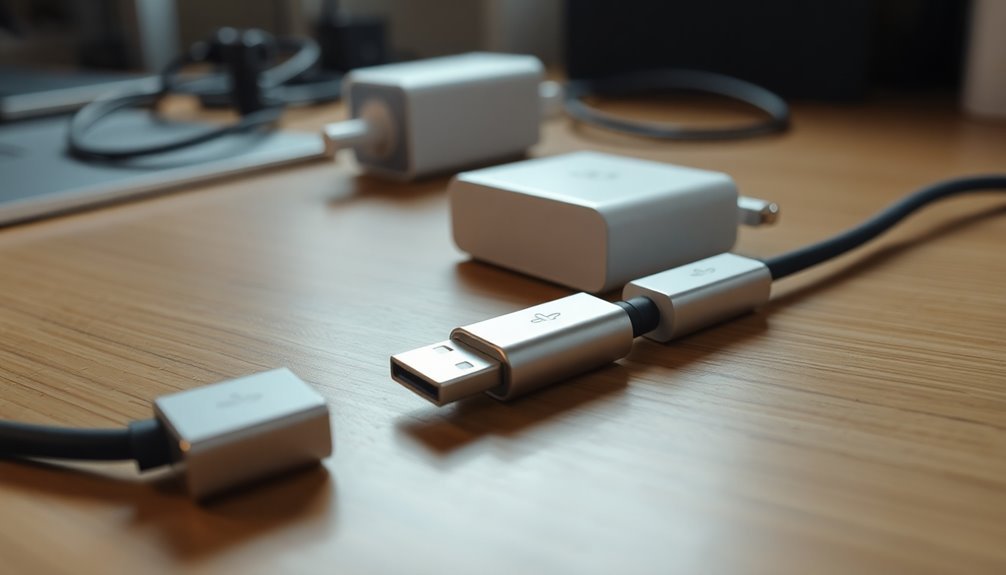
To ensure optimal performance and safety for your USB-C devices, it’s crucial to conduct thorough quality checks on your cables and chargers.
Start by confirming USB Implementers Forum (USB-IF) certification, which guarantees compliance with essential power and data standards. Look for cables equipped with E-marker chips; these chips validate voltage, current, and speed ratings, minimizing the risk of damaging your devices. Note that cables designed for 240W (EPR) require specialized certification and should be clearly labeled.
Next, assess the physical quality of your cables. Durable jackets, multiple conductors, and appropriate wiring significantly enhance reliability. Be cautious with low-quality cables, which can cause overheating or device malfunctions. Therefore, always prioritize certified options.
Using specialized testing tools such as Acroname’s USBHub3c enables you to validate cable specifications and health, ensuring they adhere to required standards.
Lastly, regularly inspect your cables for signs of damage or wear, as maintaining high-quality connections is vital for achieving peak performance in your USB-C devices. By following these guidelines, you can enhance the longevity and reliability of your USB-C accessories.
Windows Updates and System Software Maintenance
If you’re facing connectivity issues or performance drops with your USB-C devices, it’s crucial to keep your Windows system updated to ensure optimal compatibility and functionality.
Regular Windows updates can’t only enhance your USB drivers but also ensure your hardware operates efficiently. Here are some essential tips for effective Windows system maintenance that can improve your USB-C experience:
- Regularly check for the latest Windows updates, as these can significantly influence your USB-C performance and resolve potential issues.
- Use Device Manager to easily update or reinstall USB drivers when problems arise, ensuring your devices function correctly.
- Always restart your computer after applying updates to ensure all changes take effect and your system runs smoothly.
- Consider leveraging automated tools like Driver Easy for quick and efficient driver updates, streamlining the maintenance process.
Additional Troubleshooting Techniques
When troubles arise with your USB-C devices, implementing additional troubleshooting techniques can swiftly restore their functionality.
Begin by inspecting the USB-C port and give it a thorough clean. Use a flashlight to look for any dust or debris that may be obstructing the connection. Employ compressed air for an effective clean, and if necessary, carefully remove any stubborn particles with a soft brush or toothpick.
Next, experiment with different USB-C cables and ports. It’s crucial to ensure that the cables you’re using support both data transfer and power delivery. Additionally, inspect cables for any signs of damage.
To further troubleshoot, reinstall or update the USB drivers through Device Manager to ensure they’re operating correctly. You can also disable USB selective suspend in Power Options, which helps keep the ports powered during use.
Finally, run the Windows Hardware Troubleshooter to identify and rectify any faults. If you notice persistent issues following a recent update, consider accessing the Recovery Environment to uninstall any problematic updates.
After completing your troubleshooting steps, restart your device and test its functionality to confirm that the issues have been resolved.
Frequently Asked Questions
What Devices Commonly Have USB-C Ports?
You’ll find USB-C ports in smartphones, tablets, laptops, external monitors, and various peripherals like hubs and docking stations. These devices utilize USB-C for charging, data transfer, and connectivity, enhancing their versatility and performance.
Can USB-C Ports Support Video Output?
Yes, USB-C ports can support video output, but it depends on the device’s capabilities. Look for features like DisplayPort or HDMI Alternate Mode, ensuring your cables and adapters are compatible for peak performance.
Are USB-C Ports Universally Compatible With All Devices?
Think of USB-C like a universal key; it opens many doors, but not all. While widely compatible, each device requires specific protocol support, meaning you should verify compatibility to avoid frustrating surprises.
Why Is My USB-C Connection Sometimes Slow?
Your USB-C connection might be slow due to outdated drivers, incompatible cables, or insufficient power supply. Additionally, mixed device standards and large file transfers can hinder performance. Check your setup for these issues to improve speeds.
How Do I Know if My USB-C Cable Is Damaged?
Inspect your cable like a sculptor checking for cracks; frayed insulation, bent connectors, or stiffness signal damage. If charging slows, connections drop, or heat rises, it’s time to replace that worn-out lifeline.
Conclusion
In troubleshooting your USB-C issues, remember to inspect and clean the port, manage your drivers, adjust power settings, restart your hardware, check cable quality, and keep your system up to date. Each step is crucial, each action impactful. By systematically addressing these aspects, you enhance your device’s performance, guarantee a smoother experience, and minimize frustrations. Take these steps, and you’ll be well on your way to resolving USB-C problems efficiently.
